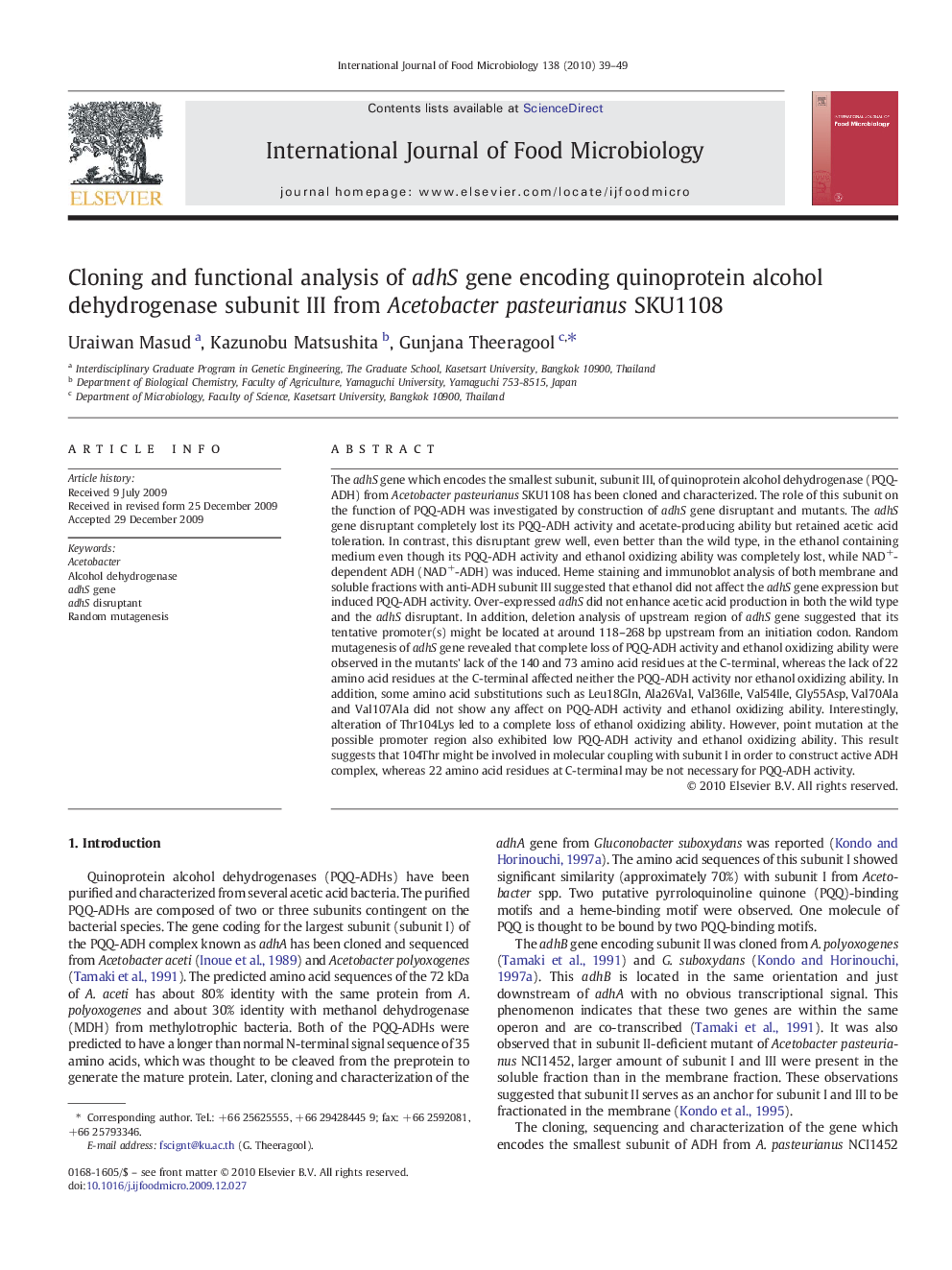| کد مقاله | کد نشریه | سال انتشار | مقاله انگلیسی | نسخه تمام متن |
|---|---|---|---|---|
| 4368368 | 1616692 | 2010 | 11 صفحه PDF | دانلود رایگان |

The adhS gene which encodes the smallest subunit, subunit III, of quinoprotein alcohol dehydrogenase (PQQ-ADH) from Acetobacter pasteurianus SKU1108 has been cloned and characterized. The role of this subunit on the function of PQQ-ADH was investigated by construction of adhS gene disruptant and mutants. The adhS gene disruptant completely lost its PQQ-ADH activity and acetate-producing ability but retained acetic acid toleration. In contrast, this disruptant grew well, even better than the wild type, in the ethanol containing medium even though its PQQ-ADH activity and ethanol oxidizing ability was completely lost, while NAD+-dependent ADH (NAD+-ADH) was induced. Heme staining and immunoblot analysis of both membrane and soluble fractions with anti-ADH subunit III suggested that ethanol did not affect the adhS gene expression but induced PQQ-ADH activity. Over-expressed adhS did not enhance acetic acid production in both the wild type and the adhS disruptant. In addition, deletion analysis of upstream region of adhS gene suggested that its tentative promoter(s) might be located at around 118–268 bp upstream from an initiation codon. Random mutagenesis of adhS gene revealed that complete loss of PQQ-ADH activity and ethanol oxidizing ability were observed in the mutants' lack of the 140 and 73 amino acid residues at the C-terminal, whereas the lack of 22 amino acid residues at the C-terminal affected neither the PQQ-ADH activity nor ethanol oxidizing ability. In addition, some amino acid substitutions such as Leu18Gln, Ala26Val, Val36Ile, Val54Ile, Gly55Asp, Val70Ala and Val107Ala did not show any affect on PQQ-ADH activity and ethanol oxidizing ability. Interestingly, alteration of Thr104Lys led to a complete loss of ethanol oxidizing ability. However, point mutation at the possible promoter region also exhibited low PQQ-ADH activity and ethanol oxidizing ability. This result suggests that 104Thr might be involved in molecular coupling with subunit I in order to construct active ADH complex, whereas 22 amino acid residues at C-terminal may be not necessary for PQQ-ADH activity.
Journal: International Journal of Food Microbiology - Volume 138, Issues 1–2, 31 March 2010, Pages 39–49